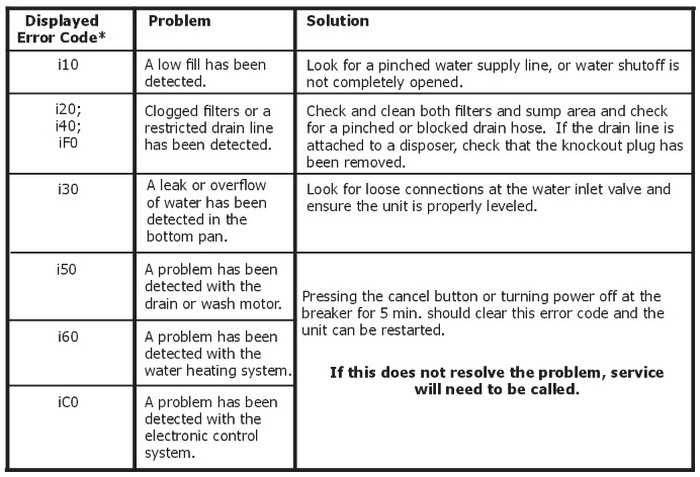
When it comes to these appliances, the “Le” error code is quite common and usually points to a leak problem. It might not mean that there’s water gushing all over your kitchen floor right now, but it’s a signal that something’s not quite right. Think of it like the dashboard warning light in your car — it’s a nudge to check things out. Grasping why this error happens and knowing what steps to take can help keep your machine running smoothly without unnecessary stress. So, let’s dive into this topic and unravel the mystery behind the “Le” code.
Understanding the “Le” Error Code
The “Le” error code on your Frigidaire dishwasher is essentially a message from your appliance saying, “Hey, there might be a leak somewhere.” But what does this mean in practical terms? Just like how a roof might spring a leak after a heavy rain, your dishwasher is hinting that water is seeping where it shouldn’t. This doesn’t always mean a pool of water in your kitchen, though; it could be as simple as a tiny drip or moisture collecting in unexpected places.
Now, why does this happen? Imagine your dishwasher as a complex dance of water and detergent — sometimes things get out of sync. Components like the door seal or the drain hose can wear out or get misaligned over time, leading to small leaks. Even detergent that foams too much can sometimes trick the sensors into thinking there’s a leak. Essentially, anything that disrupts the normal flow of water can trigger this alert.
So, if your Frigidaire is showing this error, don’t panic — it’s more of a gentle reminder to give your dishwasher a check-up. Start by looking at common culprits, checking for worn-out seals, loose hoses, or any visible water under the machine. Remember, a little detective work now can prevent bigger issues later.
Troubleshooting the Issue
If you’re ready to tackle this issue, take heart — it’s often something you can handle without calling in the pros. The first step is to listen and look. Is there any visible water around the dishwasher? Does it sound different, maybe noisier or quieter than usual? These clues can guide your next moves.
Begin your investigation by visually inspecting the area around and under your dishwasher. Like a sleuth searching for clues, you’re on the lookout for obvious signs of water or dampness. Check the door seal since it’s akin to the weatherstripping on your car door, ensuring everything stays dry inside. If it’s cracked or worn, it might not be keeping water in as it should.
Next, move on to the pipes and hoses. Just like a garden hose can spring a leak, the dishwasher’s hoses can develop small cracks over time. Make sure everything is tightly connected, and there are no kinks or holes. Even the little float switch inside, which acts like a tiny lifeguard ensuring water levels are just right, may need a look to ensure it’s not stuck or faulty.
Taking Preventative Measures
Once you’ve addressed the “Le” error code, you’re probably wondering how to prevent it from showing up again. Like maintaining any good relationship, a bit of regular care goes a long way. Start by occasionally checking and cleaning the filters and door seals, which can get gunky and affect performance over time.
Think of your dishwasher as a well-oiled machine that benefits from periodic check-ups. Run it with a dishwasher cleaner now and then to prevent buildup that can cause leaks or other error codes. Also, be cautious about overloading or using too much detergent, as both can contribute to leaks and errors.
Another handy tip is to periodically inspect the hoses and connections. It’s like ensuring your bike tires are properly inflated — a small effort that can prevent mishaps. And while no one likes to read manuals, glancing over the manufacturer’s guidelines can provide invaluable insight into optimal usage and care.
When to Call a Professional
Of course, sometimes despite our best efforts, things don’t go as planned. If you’ve tried troubleshooting but the “Le” error is as persistent as ever, it might be time to bring in the experts. Just like how you’d consult a doctor for recurring symptoms, a qualified technician can diagnose and fix stubborn issues.
Professionals have the tools and experience to identify problems that might not be obvious at first glance. They can replace parts like the water inlet valve or drainage system if they’re the source of the trouble. The peace of mind that comes with knowing your appliance is in good hands can be a huge relief.
So, if at any point you feel stuck or overwhelmed, don’t hesitate to reach out for help. It’s a smart move that can save time, money, and headaches in the long run. Plus, knowing when to seek professional assistance is an important part of caring for your appliance. Remember, we all need a little help now and then, and there’s absolutely no shame in that.